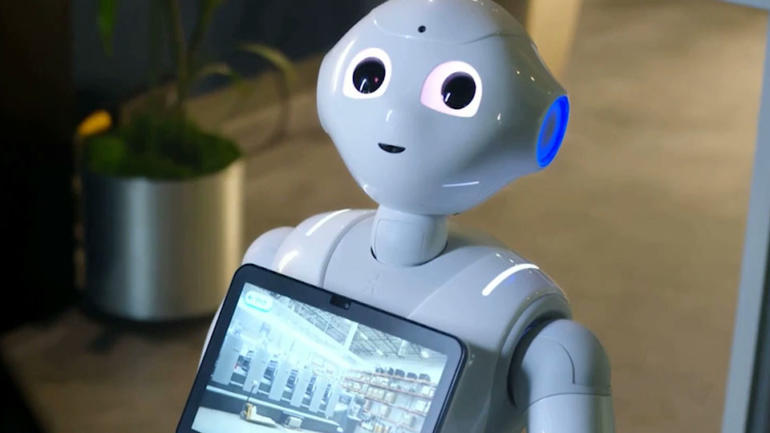The robots are coming – that line strikes fear in many, who worry about superior intelligence and job losses.
But at the TechCrunch Sessions Robotics + AI event, technologists are showcasing the latest robots that seek to help humankind.
CGTN’s Mark Niu reports.
At TechCrunch’s annual robotics and AI event, Boston Dynamics revealed its production version of SpotMini.
The robotic dog goes into production this summer.
The company also provided a peek of its newer robot called Handle.
The wheeled robot, which somewhat resembles a mechanical dinosaur, is able to balance itself as it bends over picks up boxes and moves them across a room to stack pallets.
Beijing and Silicon Valley-headquartered CloudMinds showed its XR-1 robot, which has 34 joints, allowing it to perform precise movements like pouring coffee and even threading a needle.
The company is targeting hospitality and elderly care, with a goal of producing a family nanny robot by 2025.
“It is not intended for the robots to replace jobs,” said Bill Huang, Founder & CEO of CloudMinds. “As we age, there are more and more people who need to be taken care of but there are no people to help them. So this robot is there for the labor shortage.”
At the event, you’ll find some robots that you have to do a double take to make sure it’s actually a robot.
Jennie from Tombot is modeled after a 10-month old Labrador Retriever.
It’s incredibly realistic because Tombot worked with Jim Henson’s creature shop, one of the leading animatronic companies in the world.
Petting it or talking to Jennie results in a completely different reaction from her every time.
Tom Stevens came up with the idea for the emotional support robot when his own mother suffered from Alzheimer’s and was forced to give up her dog.
“We were very concerned with the ethics of fooling the seniors,” said Tom Stevens, Founder & CEO of Tombot. “It was important for us to learn that the seniors actually know that they are robots, and they prefer that they are robots. “
How robots and AI understand and react to human emotion is the focus of Rana el Kaliouby, the CEO of Affectiva.
Her company’s technology is inside the brain of the hospitality robot Pepper, enabling it to read human facial expressions.
“As we interact with one another It’s really important that I’m able to understand your emotional state and then adapt accordingly,” said Rana el Kaliouby, Co-founder & CEO of Affectiva. “And that’s going to be true for any AI system or robot that interacts with humans on a day to day basis.”
Adapting physical form is the objective of the startup Squishy Robotics. Its robot can be dropped from more than 180 meters high.
It shapeshifts and is able to relay situational awareness information to first responders.
“It can drop from heights, and it can walk. And that shape is what enables it to do all these functions,” said Alice Agogino, Co-Founder & CEO of Squishy Robotics. “It’s got six cameras in them, 360 views as it’s dropping and then it continues providing the life-saving information when it hits the ground. It also has sensors in it, GPS sensors, thermal sensors, sensors that can measure dangerous gasses when on the ground.”
Life-altering robotic technology is what Manmeet Maggu created with his startup Trexo, which helped his own nephew with cerebral palsy take his very first steps.
“The robotic actuators can actually adjust how much force they provide to help the child with the assistance needed for them to take their steps,” said Maggu, who is the CEO Trexo Robotics.
It costs $30,000 or can be leased for $1,000 a month. But Trexo hopes to convince insurance companies from an economic standpoint that walking prevents complicated and expensive surgeries for children down the road.
 CGTN America
CGTN America

